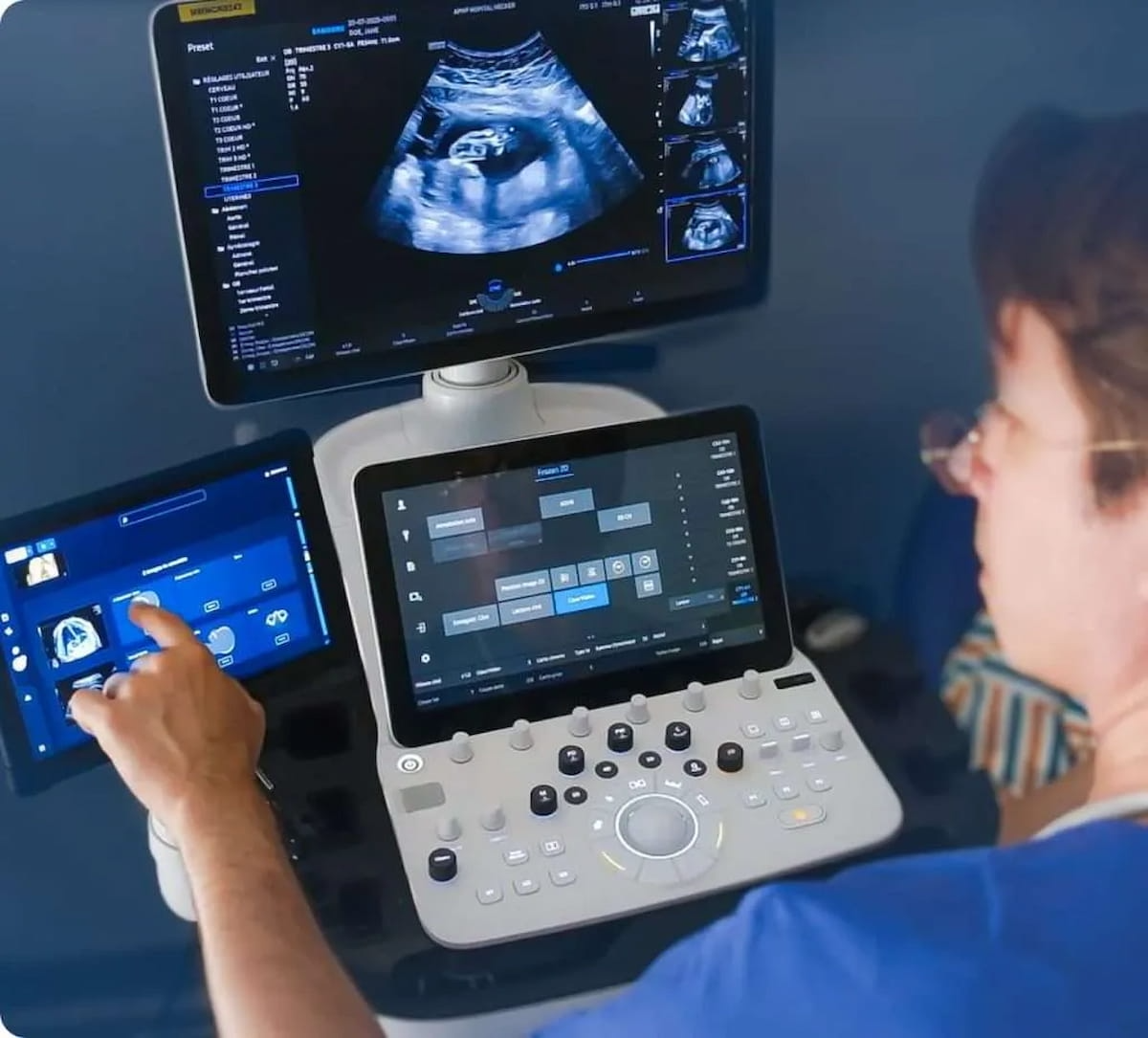FDA Clears Ultrasound AI Module for Detection of Fetal Anomalies
Recent multicenter research showed a 22 percent improvement in the detection of fetal anomalies with the Sonio Suspect AI-powered ultrasound module.
The Food and Drug Administration (FDA) has granted 510(k) clearance for Sonio Suspect, an artificial intelligence (AI)-enabled module that reportedly facilitates enhanced ultrasound detection of fetal anomalies.
Approximately 51 percent of fetal anomalies are not detected during conventional prenatal ultrasound screenings, according to Sonio, the developer of the Sonio Suspect software. The company says Sonio Suspect provides automated detection of eight ultrasound findings of fetal abnormalities across the heart, brain, and abdomen.
In a recent 47-facility multicenter study, Sonio said the Sonio Suspect module achieved a 91 percent area under the receiver operating characteristic curve (AUC) for fetal anomaly detection. (Image courtesy of Sonio.)

In a recent 47-facility multicenter study, Sonio said the Sonio Suspect module achieved a 91 percent area under the receiver operating characteristic curve (AUC) for fetal anomaly detection, a 22 percent improvement over unassisted interpretation. The company said the improved detection with Sonio Suspect was consistent regardless of clinician experience or background.
“By combining real-time AI quality control with AI-driven anomaly detection, Sonio supports ultrasound providers from exhaustive documentation to accurate diagnosis,” noted Cecile Brosset, the CEO and co-founder at Sonio. “Our technology is designed to help health-care providers detect issues early and streamline processes, ultimately improving the care every patient receives.”
Meta-Analysis Shows Merits of AI with CTA Detection of Coronary Artery Stenosis and Calcified Plaque
April 16th 2025Artificial intelligence demonstrated higher AUC, sensitivity, and specificity than radiologists for detecting coronary artery stenosis > 50 percent on computed tomography angiography (CTA), according to a new 17-study meta-analysis.
New bpMRI Study Suggests AI Offers Comparable Results to Radiologists for PCa Detection
April 15th 2025Demonstrating no significant difference with radiologist detection of clinically significant prostate cancer (csPCa), a biparametric MRI-based AI model provided an 88.4 percent sensitivity rate in a recent study.
The Reading Room: Artificial Intelligence: What RSNA 2020 Offered, and What 2021 Could Bring
December 5th 2020Nina Kottler, M.D., chief medical officer of AI at Radiology Partners, discusses, during RSNA 2020, what new developments the annual meeting provided about these technologies, sessions to access, and what to expect in the coming year.
Can CT-Based AI Radiomics Enhance Prediction of Recurrence-Free Survival for Non-Metastatic ccRCC?
April 14th 2025In comparison to a model based on clinicopathological risk factors, a CT radiomics-based machine learning model offered greater than a 10 percent higher AUC for predicting five-year recurrence-free survival in patients with non-metastatic clear cell renal cell carcinoma (ccRCC).